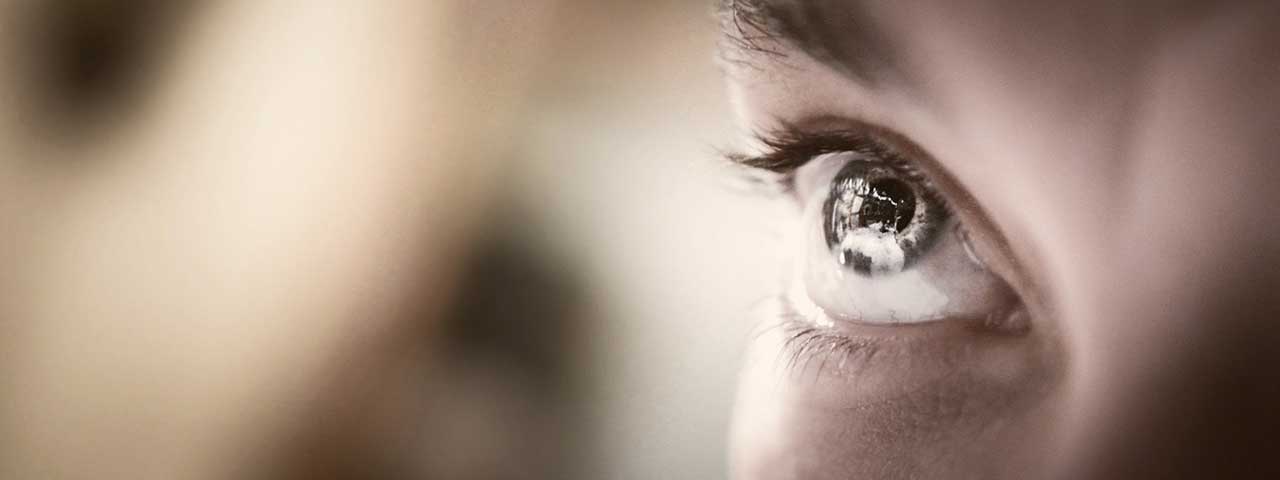Low Vision Care For Retinitis Pigmentosa In Albuquerque, New Mexico
What Is Retinitis Pigmentosa?
Retinitis Pigmentosa, also known as RP, is an inherited, genetic, eye disease which causes retinal degeneration. RP is caused by a progressive loss in the light-sensing (rod photoreceptor) cells that are located at the back of the eye.
Patients will experience decreased peripheral vision and also find it difficult to see at night. Retinitis Pigmentosa, unfortunately, will bring about the loss of central vision, night blindness, and, eventually, blindness. For now, this genetic eye disorder can only be managed as there is no cure for Retinitis Pigmentosa.
At Low Vision of New Mexico, we understand how important your vision is to live a comfortable, enjoyable life. We provide Retinitis Pigmentosa patients with suitable, high-quality, low vision aids and eyeglasses that will help improve their current level of vision.
Whether you are experiencing peripheral vision loss, central vision loss, or night blindness, our low vision doctor, Dr. Dulce Walker, will work with you to recommend the perfect low vision aids and eyeglasses for you. We treat patients of all ages at our New Mexico low vision clinic.




What Low Vision Glasses Can I Use For Retinitis Pigmentosa?
A diagnosis of Retinitis Pigmentosa shouldn’t stop you from doing the things you cherish. Whether you enjoy watching TV, reading, writing, driving, or socializing, there is a suitable low vision aid or eyeglasses for you. This solution will help you carry out your daily activities and maintain your independence.
Some of the low vision aids and eyeglasses that are often recommended for patients with Retinitis Pigmentosa include:
If you have Retinitis Pigmentosa, making out faces directly in front of you may still be possible at the initial stages, since you only have peripheral vision loss. However, once you start to experience central vision loss, recognizing faces can be quite hard. Everything looks blurry.
Our Low Vision Doctor Dr. Dulce Walker at Low Vision of New Mexico recommends low vision glasses, bioptic lenses, or side-vision awareness glasses to help improve your vision and ability to make out faces.
How Can A Low Vision Eye Doctor Help Me?
Our Low Vision Optometrist, Dr. Dulce Walker, helps patients from all over New Mexico, with eye diseases such as macular degeneration, glaucoma, diabetic retinopathy, retinitis pigmentosa, cataracts and more, to maximize their remaining vision to its full potential in order to recover and save vision functionality. This is done with the help of highly specialized Low Vision optics/glasses and other vision aids that help patients regain their independence.
Meet The Low Vision Optometrist

Living and coping with Retinitis Pigmentosa can be difficult. The first and hardest step towards dealing with this eye condition is accepting it. Doing this may not be easy. You are likely to go through moments of despair. You will even be angry and annoyed with yourself or the world.
One bright note is that you can still enjoy life and have your independence with the right low vision aids and eyeglasses. Other tips to help you cope with RP are avoiding stress, eating well, not smoking, and regular exercise.
Additional helpful steps are taking nutritional supplements and exploring other medical and alternative therapy options. Learn to adapt, have a positive attitude towards life, and never write yourself off. Through this approach, coupled with the support of your family and loved ones, you will be able to cope excellently with your vision impairment.
When you visit our low vision clinic in Albuquerque, our low vision optometrist will recommend suitable coping tips and approaches for you.
When light hits the retina, light-sensing cells called photoreceptors, transport the light to the brain through electrical impulses. The brain then sends the information back to the eyes, and this is what is known as sight or vision. When someone has RP, the light-sensing cells have degenerated causing the connection to the brain to be lost.
Light-sensing cells in the retina are grouped into cones and rods. Cones, found on the inner layer of the retina, are what we use to see during the day. Those cones help us to see colors and sharpen our vision. Rods, found on the outer layer of the retina, enable us to see at night. The rods are also used for peripheral vision as they are on the outer layer of the retina.
During the initial stages of RP, the rods are severely damaged. As the rods die, patients experience night blindness and eventually, loss of peripheral vision. Also, the loss of the rods also causes the breakdown and loss of the cones. Once the cones die, the patient will lose a large extent of their visual field. The loss of their visual field makes it hard to see or perform their day-to-day activities such as driving, reading, walking, making out faces, and so forth. Fortunately, we prescribe the ideal low vision devices and eyeglasses for these patients at our low vision clinic.
As noted above, the effect of RP on the eyes depends on whether there is a deterioration of the cones or rods. In most cases, the rods are affected first and thus there is night blindness and loss of peripheral vision.
Central vision is still there and seeing is like looking through a gun barrel or a doughnut. When the cones are affected, colors, visual acuity, and central vision are lost and tunnel vision will also develop. Think of it as a curtain that is slowly closing from the sides until the central vision becomes blurred.
Simply put, the symptoms of Retinitis Pigmentosa include:
- Loss of night vision
- Gradual loss of peripheral (side) vision
- Loss of central vision
- Problems with color vision
RP is generally diagnosed in adolescents and is a progressive disease. By age 40, most RP patients are legally blind.
Unfortunately, RP is an incurable disease. Loss of night-vision, peripheral vision, or any other part of your vision can be a very difficult and traumatic experience. There is a sense of loss of independence. One can’t drive, watch TV, see their family and friends normally, or do general household activities. Ordinary eyeglasses and contacts may not be sufficient to correct vision problems related to RP.
A lot of patients may have been told there is nothing to be done. However, there is good news. At , we offer several solutions to help patients with RP regain their independence and begin to live a more normal life. recommends the suitable low vision aid or eyeglasses to help improve your condition.
We often recommend telescopic lenses, reverse telescopic lens or side-vision awareness glasses for these patients. The telescopic lenses are small telescopes that are placed on the lens and, just like binoculars, they enlarge the objects in the vision path. Side-vision awareness glasses will also help to improve peripheral vision.
A reverse telescopic lens is just like holding binoculars backward. Objects will be smaller, but field vision is greater. This will give the patient a larger area of mobility because they will see more of their surroundings. These are a great help for those at the beginning stages of RP because they still have central vision. In addition, what they need is minification and not magnification. This means that while a telescope focuses in on an object, it makes the surrounding area small, as opposed to a reverse telescope, which focuses out of an object, giving a greater view of the surrounding area and the peripheral.
However, during the later stages of RP when central vision is lost, bioptic telescopic lens or other forms of telescopes, work well to magnify objects. Bioptic telescopes and other low vision aids have done wonders for those suffering from RP. They have strong magnifying lenses that allow the patient to focus on objects.
These various low vision aids can allow patients to recognize faces, watch TV, read books, look at distant objects again, and more. In many cases, they can even help with a driving test by helping to identify street signs and the road in front of them.
If you suffer from RP and you think all hope is lost to regain good vision, visit Dr. Dulce Walker at Low Vision of New Mexico. With our various low vision aids and eyeglasses, we can help you see again. Using his expertise and experience in the low vision field, Dr. Dulce Walker will offer you a lifeline to be able to perform many activities and regain your independence. Contact us today to learn more about our services. An amazing experience awaits you!


